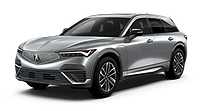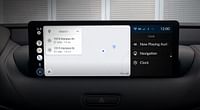Navigating the intricacies of parking a car is a rite of passage for every new driver, and mastering this skill is essential for a stress-free driving experience. Whether you're facing the challenge of parallel parking on a bustling city street or gracefully easing into a perpendicular parking space, the art of parking involves finesse and awareness.
In this beginner's guide, we'll delve into the fundamental aspects of how to park a car, offering invaluable parallel parking tips, the nuances of perpendicular parking, and what to do if, regrettably, you find yourself having hit a parked car. From the basics of aligning your vehicle to the curb to handling unexpected mishaps, this guide aims to empower new drivers with the knowledge they need to navigate parking scenarios with confidence and poise.
So, buckle up as we embark on this journey through the parking lot of essential driving skills, ensuring you're equipped to handle any parking challenge that comes your way!
Basic Parking Etiquette
How to park a car, you ask? Well, this undertaking begins with proper etiquette. Good parking practices not only helps maintain order and convenience but also contributes to a positive driving experience for every vehicle owner.
Parking within the lines: When parking in a designated space, it is important to park your vehicle within the lines provided. This ensures that parking spaces are used efficiently and prevents encroachment on adjacent spots.
Avoiding double parking: Double parking, which refers to parking your vehicle beside another parked car, is generally discouraged. It can obstruct traffic flow and inconvenience other drivers. Instead, find an available parking space or pull over to allow others to park properly.
Leaving sufficient space: When parking your vehicle in a designated space, make sure to leave enough space between your car and neighboring vehicles. This allows other drivers to easily enter and exit their vehicles without the risk of accidentally hitting your car or theirs.
Respect Handicap Spaces: Handicap parking spaces are reserved for individuals with disabilities who require easier access to facilities. It is crucial to respect these spaces and avoid parking in them without the appropriate permit. Violating handicap parking regulations can result in fines and penalties, and, more importantly, it denies those with disabilities the access they need.
Mind Your Manners in Crowded Areas: In busy parking lots or crowded streets, patience is key. Avoid aggressive driving behavior, such as honking or rushing to secure a parking space. Allow others the time and space they need to park safely. If you find a spot, signal clearly and park efficiently to minimize disruption to others.
Paying attention to signage: Pay close attention to parking signs and adhere to their instructions. These signs may include restrictions on parking duration, time limits, or permit requirements. Ignoring signage can lead to parking tickets or unnecessary fines.
Turn Off Lights and Lock Up: After parking, turn off your vehicle's lights to conserve battery power and be considerate to others in the vicinity.
Parallel Parking Tips
Parallel parking can be challenging especially for new drivers, but with enough practice it will become easier and natural!
Find the right spot: Make sure there are no “no parking” signs indicating that it is prohibited to park there. Choose a spot that gives you enough time and space to maneuver, especially if it's your first time to do parallel parking.
Position your car: After finding the right spot, position your car parallel to the one you intend to park behind. Make sure the cars are roughly 2 feet away to provide enough space for your vehicle to maneuver.
Align the rear of your car: Shift into reverse gear while checking your mirrors and turning your head so you can clearly see the back of the car. Turn your wheels all the way to the right (or left, depending on which side you are parking). While in reverse, slowly move the car until it’s in a 45-degree angle with the front bumper of the car behind the intended parking space.
Start backing up slowly: Straighten the front wheels and start reversing slowly while keeping an eye on the surrounding vehicles. When the front bumper of your car is aligned with the rear bumper of the vehicle in front of the parking space, stop. Turn the steering wheel all the way to the left (or right, depending on which side you are parking) and reverse slowly.
Straighten out and adjust: Once the distance and position are correct, straighten your steering wheel to face the front of the parked vehicle. Back up a bit more to adjust your vehicle and ensure that you are in the center of the spot. Check that your car is not sticking out too much on either side or in front of other vehicles.
Perpendicular Parking Tips
Practice is key when it comes to perpendicular parking. With time, you will become more confident and proficient in this parking technique.
Approaching the Parking Space: Perpendicular parking involves parking your vehicle at a right angle to the curb or other parked cars. As you approach a potential parking space, slow down and signal your intention to park. Identify a space that is large enough for your vehicle, ensuring there are no obstructions or restrictions. As you get closer, align your car parallel to the adjacent vehicles before the parking space. This initial positioning sets the stage for a smoother entry into the parking spot.
Adjusting Your Position: Once aligned, come to a complete stop and put your vehicle in reverse. Check the side mirrors, to gauge the distance between your car and the adjacent vehicles. Begin to back up slowly, turning the steering wheel in the direction you want your car to go. Keep a close eye on your surroundings and be prepared to adjust your steering to navigate into the parking space smoothly. Aim to position your car equidistant from the cars on either side.
Straightening Your Wheels: Once your car is within the parking space, straighten your wheels by turning the steering wheel to the center position. This step ensures that your vehicle is properly aligned and occupies the designated parking area efficiently. Take a moment to check your proximity to the curb and make any necessary adjustments by pulling forward or backward. The goal is to have your car positioned neatly within the parking space, maintaining a reasonable distance from the cars on either side.
Exiting the Parking Space: When you're ready to leave, check your mirrors and blind spots to ensure it's safe to pull out. Shift into drive, turn your steering wheel in the appropriate direction, and exit the parking space slowly.
What to do if You Hit a Parked Car
Discovering that you've hit a parked car can be stressful, but it's crucial to handle the situation responsibly. Here's a guide on what to do if you find yourself in this unfortunate scenario.
Stay Calm: If you unknowingly hit a parked car, especially when you are a new driver, it can be very traumatic. However, it is important to take a deep breath and remain calm. Panicking won't help the situation, and staying composed is essential for making rational decisions.
Assess the Damage: Examine the extent of the damage to both your vehicle and the parked car. Note any visible dents, scratches, or other damages. If possible, take photos with your phone to document the scene. This evidence may be helpful for insurance purposes.
Leave a Note: If you've caused noticeable damage and the owner of the parked car is not present, it's essential to leave a note with your contact information. Include your name, phone number, and a brief explanation of what happened. Place the note in a conspicuous location on the parked car, such as under the windshield wiper.
Notify Authorities: In some locations, it may be a legal requirement to report the accident to the police, especially if the damages are significant. Check local laws to determine if you need to contact law enforcement. If there are witnesses, ask if they would be willing to provide statements or contact information.
Inform Your Insurance Company: Contact your insurance company as soon as possible to report the incident. Provide them with accurate details of what happened and any evidence you've gathered. They will guide you through the claims process and advise on the necessary steps to take.
Remember, honesty is crucial if you unknowingly hit a parked car. Failing to leave a note or report the incident can lead to legal consequences and may affect your insurance coverage. Taking responsibility for your actions and following the appropriate steps helps minimize the negative impact on everyone involved.
Final Thoughts
Mastering the art of parking is a fundamental skill for every new driver, and this beginner's guide has provided valuable insights into the nuanced techniques of how to park a car. From the step-by-step process of parallel parking, with essential tips to ease the challenge, to the considerations of perpendicular parking, this guide aimed to empower drivers with the confidence to navigate various parking scenarios.












